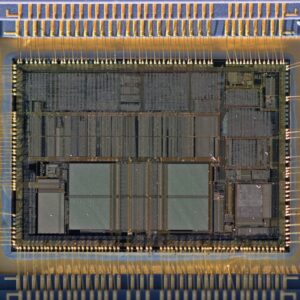Running Android apps on Linux has gained popularity as users seek to access mobile applications on their desktop or laptop computers. This trend has been driven by the increase in remote work and the desire for seamless integration between devices. The ability to run Android apps on Linux provides users with access to mobile games, productivity tools, and other applications typically confined to smartphones or tablets.
Several methods exist for running Android apps on Linux, with one of the most common being the use of an Android emulator. Emulators create a virtual Android device on a Linux machine, allowing users to access the Google Play Store and download Android apps as they would on a physical Android device. This article will cover the process of installing an Android emulator on Linux, including configuration for optimal performance, downloading and installing Android apps, troubleshooting common issues, and optimizing the overall experience of running Android apps on a Linux system.
Key Takeaways
- Running Android apps on Linux opens up a world of possibilities for users who want to access their favorite mobile apps on their desktop or laptop.
- Installing an Android emulator on Linux is a straightforward process that allows users to create a virtual Android device on their computer.
- Configuring the Android emulator for Linux involves setting up the desired Android version, screen resolution, and other parameters to match the user’s preferences.
- Downloading and installing Android apps on Linux can be done through various methods, including using the Google Play Store, APK files, or third-party app stores.
- Troubleshooting common issues when running Android apps on Linux may involve addressing compatibility issues, performance issues, or errors related to the emulator setup.
Installing an Android Emulator on Linux
Running Android Apps with Anbox
Anbox is a popular Android emulator for Linux that allows you to run Android apps on your desktop without the need for a separate virtual machine. To get started, you’ll need to add the Anbox repository to your system and then install the Anbox package. Once installed, you can launch Anbox from your applications menu and begin using it to run Android apps on your Linux machine.
Genymotion: A Feature-Rich Alternative
Genymotion is another popular option for running Android apps on Linux, offering a more feature-rich and customizable experience. To install Genymotion, simply download the package from the official website and follow the provided installation instructions. With Genymotion, you can create virtual Android devices with specific configurations and run them on your Linux machine.
Advanced Features for Developers and Power Users
Genymotion also provides advanced features that make it a popular choice for developers and power users. These features include hardware acceleration and integration with development tools, allowing for a more seamless and efficient development experience. Whether you’re a developer looking to test your app on different Android versions or a power user looking to run Android apps on your Linux machine, Genymotion has got you covered.
Configuring the Android Emulator for Linux

Once you have installed an Android emulator on your Linux machine, it is important to configure it for optimal performance and usability. Depending on the emulator you choose, there may be specific settings and options that you can adjust to improve the experience of running Android apps on Linux. For example, you may be able to adjust the amount of RAM and CPU cores allocated to the virtual Android device, enable hardware acceleration for improved graphics performance, and configure network settings for internet access.
In addition to adjusting the emulator settings, you may also want to consider installing additional software or tools to enhance the functionality of running Android apps on Linux. For example, you can install ADB (Android Debug Bridge) to interact with the virtual Android device from the command line, enabling you to install apps, transfer files, and perform other tasks. You may also want to install a file manager app within the virtual Android device to easily navigate and manage files, as well as other utility apps that can improve the overall experience of using Android apps on Linux.
Downloading and Installing Android Apps on Linux
| Metrics | Data |
|---|---|
| Number of Android apps available for Linux | Over 2.8 million |
| Size of the average Android app | Around 15-20 MB |
| Time taken to download and install an Android app | Depends on the app size and internet speed |
| Storage space required for Android apps on Linux | Varies based on the number and size of apps installed |
Once you have installed and configured an Android emulator on your Linux machine, you can begin downloading and installing Android apps from the Google Play Store or other sources. Most emulators come with the Google Play Store pre-installed, allowing you to browse and download apps just as you would on a physical Android device. Simply launch the Play Store app within the emulator, sign in with your Google account, and start exploring the vast library of Android apps available for download.
In addition to the Google Play Store, you can also sideload APK files to install Android apps on your Linux machine. This can be useful for installing apps that are not available on the Play Store or for testing custom-built apps. To sideload an APK file, simply download the file to your Linux machine and then use the file manager within the emulator to navigate to the location of the file and install it.
Keep in mind that sideloading apps from unknown sources can pose security risks, so it is important to only install apps from trusted sources.
Troubleshooting Common Issues when Running Android Apps on Linux
While running Android apps on Linux can provide a seamless experience, there are some common issues that users may encounter along the way. One common issue is performance-related problems, such as slow app loading times or laggy gameplay in games. To address performance issues, you can try adjusting the emulator settings to allocate more resources to the virtual Android device, such as increasing the amount of RAM or enabling hardware acceleration if available.
Another common issue when running Android apps on Linux is compatibility problems with certain apps or games. Some apps may not function properly within the emulator environment due to differences in hardware or software configurations. In these cases, you may need to search for alternative apps that offer similar functionality or consider using a different emulator that provides better compatibility with the specific app or game you want to use.
Tips and Tricks for Optimizing Android Apps on Linux

Stay Up-to-Date with Emulator Updates
To get the most out of running Android apps on Linux, it’s essential to regularly update your emulator software. This ensures you have access to the latest features and improvements. Emulator developers frequently release updates that address performance issues, add new features, and improve compatibility with a wider range of apps and games.
Master Keyboard Shortcuts and Input Methods
Familiarizing yourself with keyboard shortcuts and other input methods can significantly enhance productivity and convenience when using Android apps on a desktop or laptop. Many emulators support keyboard mapping, allowing you to assign specific keys or combinations to emulate touch gestures or other actions within the virtual Android device. This can be particularly useful for games that rely heavily on touch controls or for productivity apps that benefit from keyboard input.
Boost Performance and Usability
By following these tips, you can improve the overall performance and usability of Android apps on Linux. With the latest emulator updates and mastery of keyboard shortcuts, you can enjoy a seamless and satisfying experience.
Conclusion and Future Developments for Running Android Apps on Linux
In conclusion, running Android apps on Linux has become increasingly popular as users seek ways to enjoy their favorite mobile apps on their desktop or laptop. With the availability of powerful emulators such as Anbox and Genymotion, users have access to a wide range of features and capabilities for running Android apps on their Linux machines. By following the installation and configuration steps outlined in this article, users can enjoy a seamless experience of using Android apps on their Linux devices.
Looking ahead, future developments in running Android apps on Linux may include improved compatibility with a wider range of apps and games, enhanced performance through hardware acceleration and other optimizations, and greater integration with desktop environments for a more cohesive user experience. As technology continues to evolve, we can expect to see even more innovative solutions for running Android apps on Linux, further bridging the gap between mobile and desktop computing platforms. Whether you are a casual user looking to enjoy your favorite mobile games or a developer seeking a robust testing environment, running Android apps on Linux offers a versatile and convenient solution for accessing the vast ecosystem of Android apps from your desktop or laptop.
If you’re interested in running Android apps on Linux, you might want to check out this article on TheMetaRush. They provide a comprehensive guide on how to set up an Android emulator on Linux, allowing you to run your favorite mobile apps on your desktop. This can be a game-changer for those who prefer the Linux operating system but still want access to popular Android apps.
FAQs
What is the article about?
The article is about running Android apps on a Linux operating system.
Why would someone want to run Android apps on Linux?
Running Android apps on Linux can be useful for developers who want to test their apps on a different platform, or for users who prefer using Linux but still want access to Android apps.
Is it possible to run Android apps on Linux?
Yes, it is possible to run Android apps on Linux using emulators or compatibility layers such as Anbox or Genymotion.
What is an emulator?
An emulator is a software program that allows one computer system to behave like another computer system. In the context of running Android apps on Linux, an emulator can mimic the behavior of an Android device.
What is Anbox?
Anbox is a compatibility layer that allows Android applications to run on a Linux system without emulation. It integrates the Android operating system core with Linux, enabling Android apps to run natively on Linux.
What is Genymotion?
Genymotion is a cross-platform Android emulator that allows users to run and test Android apps on their desktop. It provides a variety of virtual devices with different Android versions and configurations.
Are there any limitations to running Android apps on Linux?
While it is possible to run Android apps on Linux, there may be limitations in terms of performance, compatibility, and access to certain hardware features. Additionally, not all Android apps may work seamlessly on Linux.





